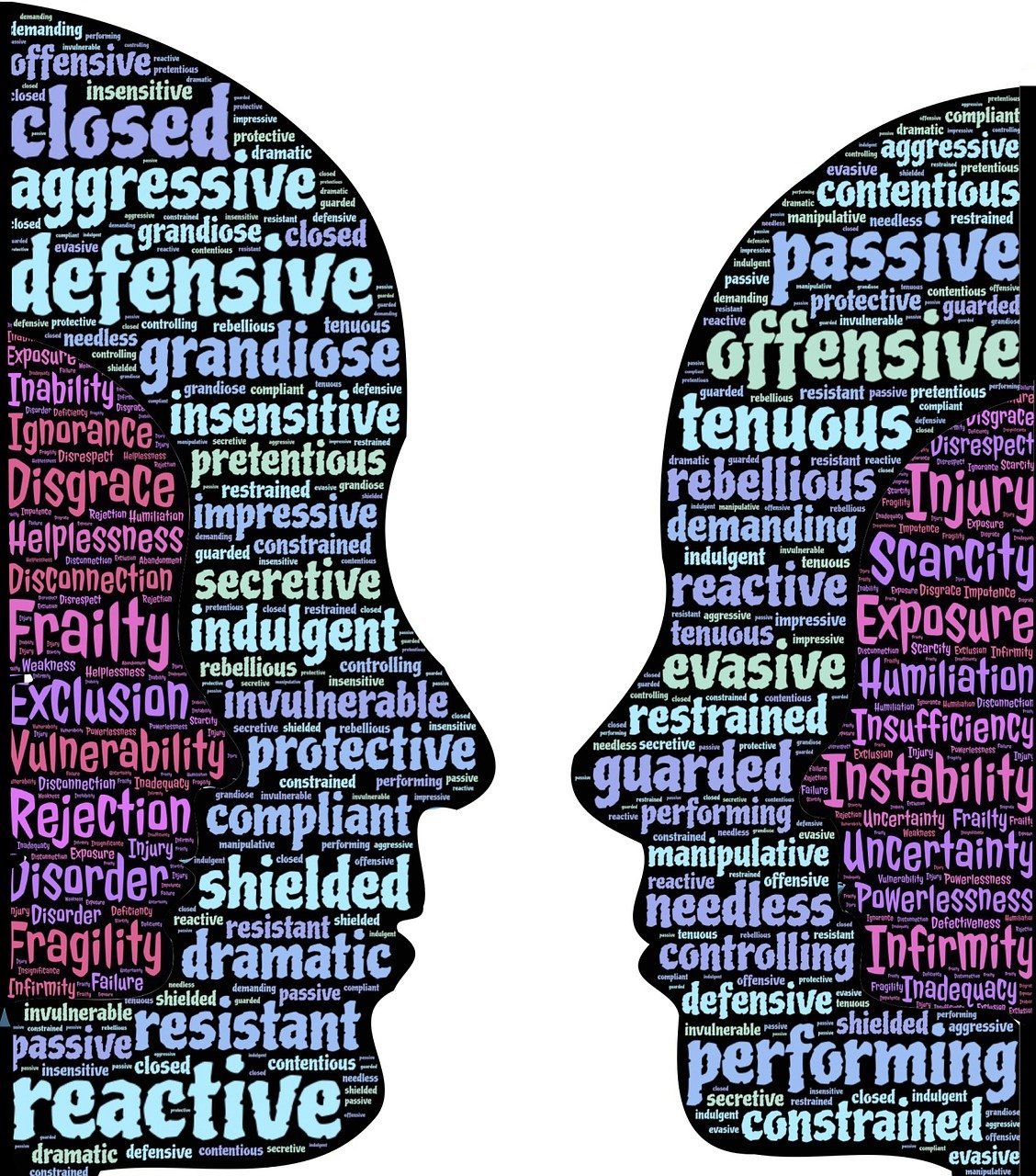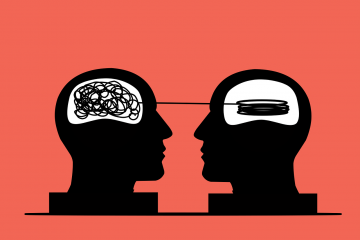
Click below to listen to this article:
Behavioural theory
Behavioural theory is a branch of psychology that studies how human behaviour is shaped by environmental factors. It emerged in the early 20th century as a reaction to the introspective and subjective approaches of psychoanalysis and humanism, and sought to establish psychology as an objective and measurable science.
This article explains the history and details of behavioural theory, the therapeutic theory which cognitive-behavioural therapy is based on.
What is behavioural theory?
Behavioural theory is based on the idea that all behaviours are learned through conditioning, which is a process of association and reinforcement. Behavioural theory has two main types: classical conditioning and operant conditioning. Classical conditioning involves learning by pairing a neutral stimulus with an unconditioned stimulus that elicits a natural response. Operant conditioning involves learning by the consequences of one’s actions, which can be either positive or negative.
Behavioural theory has had a significant impact on various fields of psychology, such as learning, motivation, personality, and therapy. It has also influenced the study of leadership, by identifying different styles of behaviour that leaders can adopt in different situations. The Behavioural theory of leadership suggests that effective leaders are not born, but made through learning and experience.
History of Behavioural theory
Behavioural theory is a psychological approach that studies how human behaviour is shaped by environmental factors. It emerged in the early 1900s as a reaction to the dominant school of thought at the time, psychoanalysis, which focused on internal mental processes and innate factors. Behavioural theory proposed that behaviour can be explained by observable stimulus-response associations, and that learning occurs through interaction with the environment.
There are two main types of behavioural theory: classical conditioning and operant conditioning. Classical conditioning refers to learning by association, where a neutral stimulus becomes associated with an innate reflexive response after repeated pairing with another stimulus that naturally elicits that response. For example, Pavlov’s dogs learned to salivate at the sound of a bell after the bell was repeatedly presented with food. Operant conditioning refers to learning by consequences, where a voluntary behaviour becomes more or less likely depending on the positive or negative outcomes that follow it. For example, Skinner’s rats learned to press a lever to receive food or avoid shock.
Behavioural theory has been influential in many fields of psychology, such as education, therapy, and social psychology. It has also been criticized for being too simplistic, deterministic, and reductionist, and for ignoring the role of biological, cognitive, and emotional factors in human behaviour. However, behavioural theory has also evolved to incorporate new concepts and methods, such as social learning theory, cognitive-behavioural therapy, and applied behaviour analysis.
Classical conditioning
Classical conditioning is a type of learning that occurs when a neutral stimulus becomes associated with an unconditioned stimulus that already triggers a reflexive response. The neutral stimulus then becomes a conditioned stimulus that elicits a conditioned response similar to the original unconditioned response. This process was discovered by Ivan Pavlov, a Russian physiologist, who conducted experiments with dogs and their salivation response to food.
Some examples of classical conditioning are:
- A child learns to fear dogs after being bitten by one. The dog (neutral stimulus) becomes associated with the pain of the bite (unconditioned stimulus) and triggers fear (conditioned response).
- A person feels happy when they smell their partner’s perfume. The perfume (neutral stimulus) becomes associated with the partner (unconditioned stimulus) and triggers happiness (conditioned response).
- A drug user feels cravings when they see a syringe. The syringe (neutral stimulus) becomes associated with the drug (unconditioned stimulus) and triggers cravings (conditioned response).
Classical conditioning has several principles, such as acquisition, extinction, spontaneous recovery, generalization, and discrimination. Acquisition is the initial stage of learning when the neutral stimulus and the unconditioned stimulus are paired repeatedly. Extinction is the weakening or disappearance of the conditioned response when the conditioned stimulus is no longer paired with the unconditioned stimulus. Spontaneous recovery is the reappearance of the conditioned response after a period of extinction. Generalization is the tendency to respond to stimuli that are similar to the conditioned stimulus. Discrimination is the ability to distinguish between the conditioned stimulus and other irrelevant stimuli.
Classical conditioning has many applications to mental health, such as understanding and treating phobias, post-traumatic stress disorder, and drug use. phobias are irrational fears that can be explained by classical conditioning. For example, a person who has a phobia of spiders may have learned to associate spiders with a traumatic event in their past. post-traumatic stress disorder is a severe anxiety disorder that can be triggered by stimuli that remind the person of a traumatic event. For example, a veteran who has PTSD may experience flashbacks or panic attacks when they hear loud noises or see certain images. Drug use can be influenced by classical conditioning as well. For example, a drug user may associate certain cues or contexts with drug effects and experience cravings or withdrawal symptoms when they encounter them.
Operant conditioning
Operant conditioning is a type of learning in which the behaviour of an organism is influenced by the consequences that follow it. This involves two key components: reinforcement and punishment. Reinforcement is any stimulus that increases the likelihood of a behaviour being repeated, while punishment is any stimulus that decreases the likelihood of a behaviour being repeated. Reinforcement and punishment can be either positive or negative, depending on whether they involve adding or removing a stimulus. For example, positive reinforcement is when a desirable stimulus is added after a behaviour, such as giving a dog a treat for sitting on command. Negative reinforcement is when an aversive stimulus is removed after a behaviour, such as turning off a loud noise when a rat presses a lever.
Positive punishment is when an aversive stimulus is added after a behaviour, such as spraying a cat with water for scratching the furniture. Negative punishment is when a desirable stimulus is removed after a behaviour, such as taking away a child’s toy for hitting another child. Operant conditioning can be used to shape complex behaviours by reinforcing successive approximations of the desired behaviour, or by using schedules of reinforcement that vary the frequency and timing of the reinforcement delivery.
Practical application
cognitive-behavioural therapy (CBT) is a form of psychotherapy that is based on the principles of behavioural theory. Behavioural theory assumes that human behaviour is learned and can be modified by changing the environmental contingencies that reinforce or punish it. CBT applies this theory to help clients identify and modify the maladaptive thoughts, emotions and behaviours that contribute to their psychological distress. CBT uses various techniques, such as cognitive restructuring, exposure, behavioural activation, problem-solving and relaxation, to help clients challenge and change their negative cognitions and behaviours, and to develop more adaptive coping skills. It has been shown to be effective for a range of mental health problems, such as anxiety disorders, depression, obsessive-compulsive disorder, post-traumatic stress disorder and eating disorders.
Strengths and weaknesses
Behavioural theory assumes that behaviour is shaped by external stimuli, such as rewards and punishments, and that internal mental processes are not relevant for understanding behaviour. Behavioural theory has been applied to various fields, such as education, therapy, leadership and management.
Some of the strengths of behavioural theory are:
- It is based on observable and measurable behaviour, which makes it scientific and objective.
- It has many practical applications, such as behaviour modification, behaviour therapy, classroom management and organizational behaviour.
- Likewise, it can explain how people acquire new skills and habits through learning processes, such as classical conditioning and operant conditioning.
It can account for individual differences in behaviour based on different learning histories and environmental factors.
Some of the weaknesses of behavioural theory are:
- It is too simplistic and reductionist, as it ignores the role of biological, cognitive and emotional factors in influencing behaviour.
- It is too deterministic, as it implies that people have no free will or choice over their actions and are controlled by their environment.
- Likewise, it does not explain complex human behaviours, such as creativity, problem-solving, language and personality.
- It does not account for social and cultural influences on behaviour, such as norms, values and expectations.
Further reading
If you would like to learn more about behavioural theory, you can check out the following weblinks that discuss its definition, history, concepts, and impact in more detail.
Behaviorist Approach to Psychology: Definition, History, Concepts, and Impact by Saul Mcleod. This article provides a comprehensive overview of the behaviourist perspective and its main features, assumptions, methodology, strengths, and weaknesses. It also explains the different types of behaviourism and the key experiments and theorists that contributed to the field.
Behaviorism: Definition, History, Concepts, and Impact by Kendra Cherry. This article summarizes the basic principles of behaviourism and its historical development. It also describes the two main types of behaviourism: methodological and radical. It also discusses some of the criticisms and limitations of the behaviourist approach.
What Is The Behavioral Learning Theory? by Western Governors University. This article focuses on the application of behaviourism to education and learning. It outlines how behaviourism can help teachers understand how students learn and how to use reinforcement and feedback to shape their behaviour. It also provides some examples of behavioural learning strategies that can be used in the classroom.
Behavioural Theory by Leadership Theorist. This article explores how behaviourism can be applied to leadership and management. It explains how behavioural theories concentrate on what leaders do and how they interact with their followers and organizations. It also compares and contrasts different behavioural leadership styles and models.
Behavioral Theory, Behavioral Psychology, Or Behaviorism – How Behavior And Personality Intersect by BetterHelp. This article examines how behaviourism can be used to understand personality and mental health. It discusses how behavioural theory can help people change their behaviours and cope with their emotions. It also suggests some ways to find a therapist who uses behavioural techniques to help clients achieve their goals. URL:


0 Comments